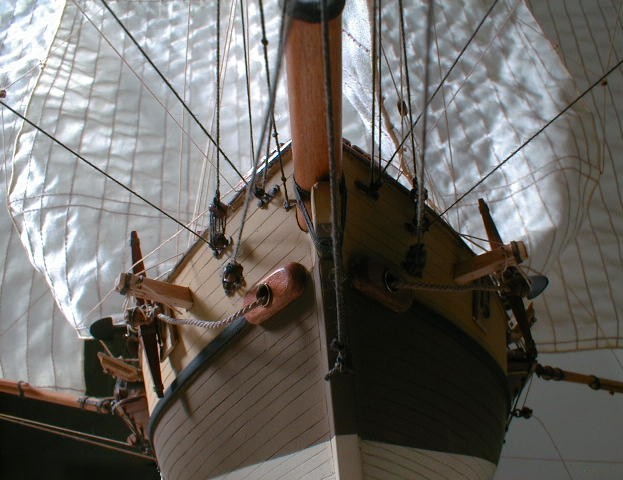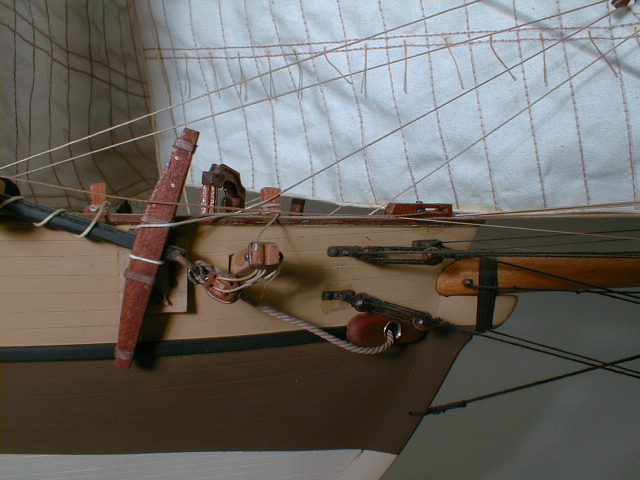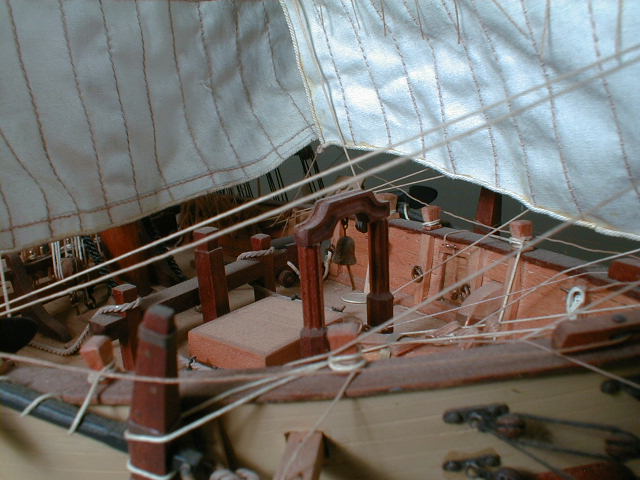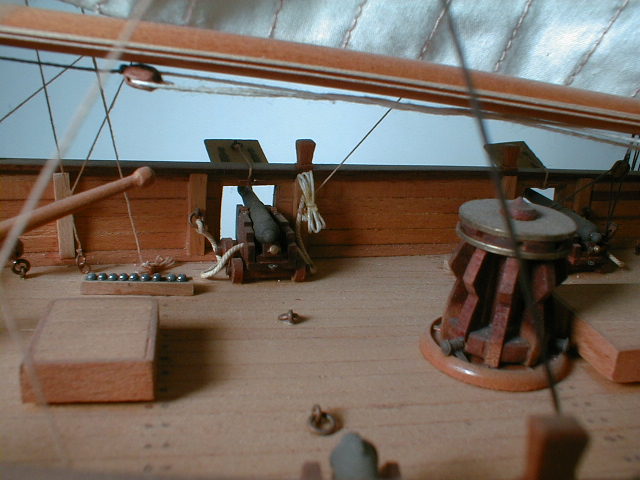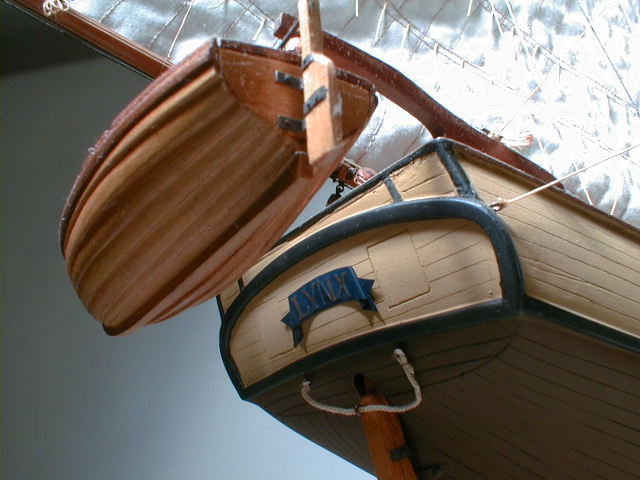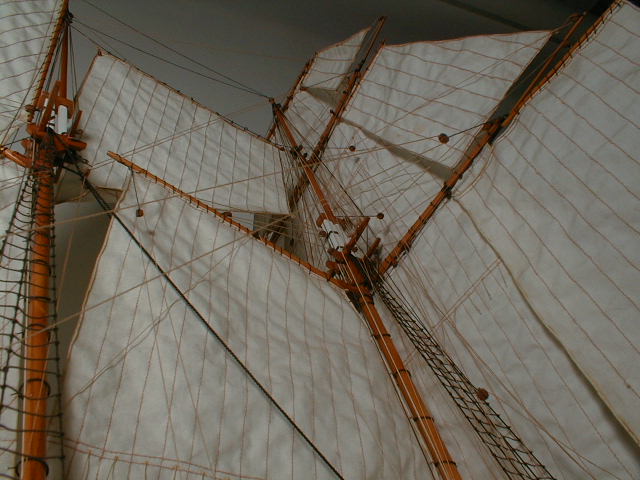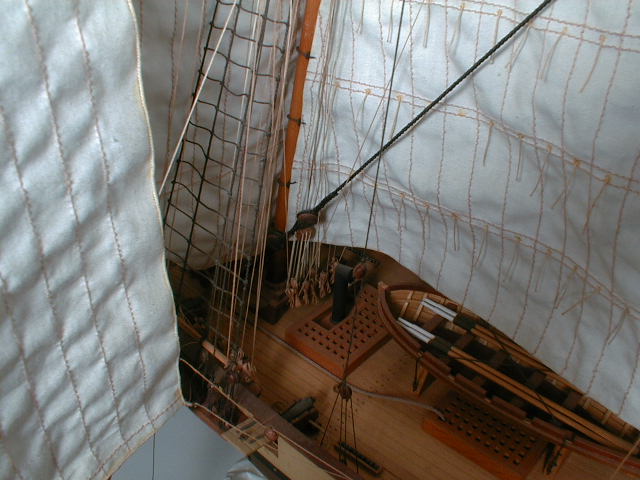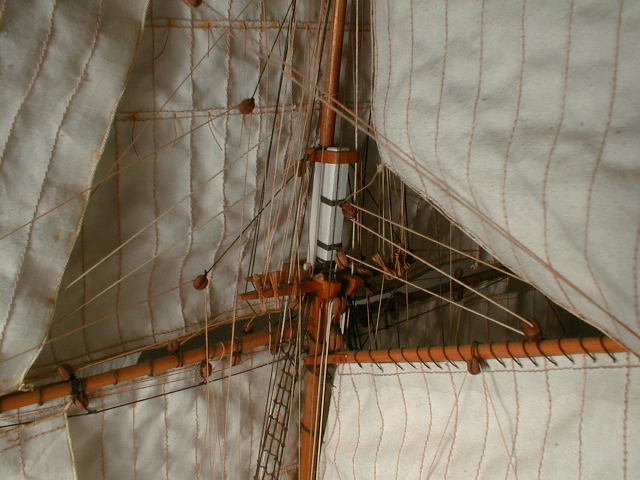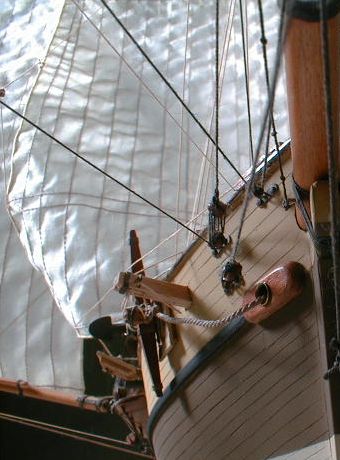Clipper
Baltimore Clipper Lynx
- Scale: 1:50
- Release: 1994
- Limited Edition: 50
- Model Size: 45”L x 19”W x 30”H
- Base Type: Black Walnut
- Base/Case Size: 48”L x 21”Wx 32”H
- Availability: Sold Out
Immediately following the outbreak of hostilities in 1812, British ships appeared to blockade the Atlantic and Gulf coasts of the United States. Baltimore shipbuilders stepped up their production of sharp-built schooners for use as blockade-runners and privateers. These schooners were designed for speed, and became more and more extreme. They were light, with sharply raked stem and sternpost, heavy with rigging, and like nothing else on the sea at that time.
Speed was the advantage and, at the outset of the war, many of the schooners were equipped with sails of a new cotton duck rather than flax. The cotton sails held their shape better, were lighter and required less wetting down, which caused the fabric to swell, close the weave, and thereby hold the wind better. They were also whiter than flax and, along with the rake of the schooner’s mast and cut and number of sails, contributed to the speed and distinctive profile of what was to be called the Baltimore Clipper.
The Lynx was one of the most fully documented Baltimore Clippers. The 94-foot Lynx was a vessel of 225 tons, had a crew of 35, and mounted six 12-pounder guns while carrying a cargo of cotton, coffee and sugar. She was built in 1812 for James and Amos Williams and Levi Hollingsworth, and was commissioned on July 14, 1812. This beautiful vessel was an example of the highest development of the Baltimore Clipper.
